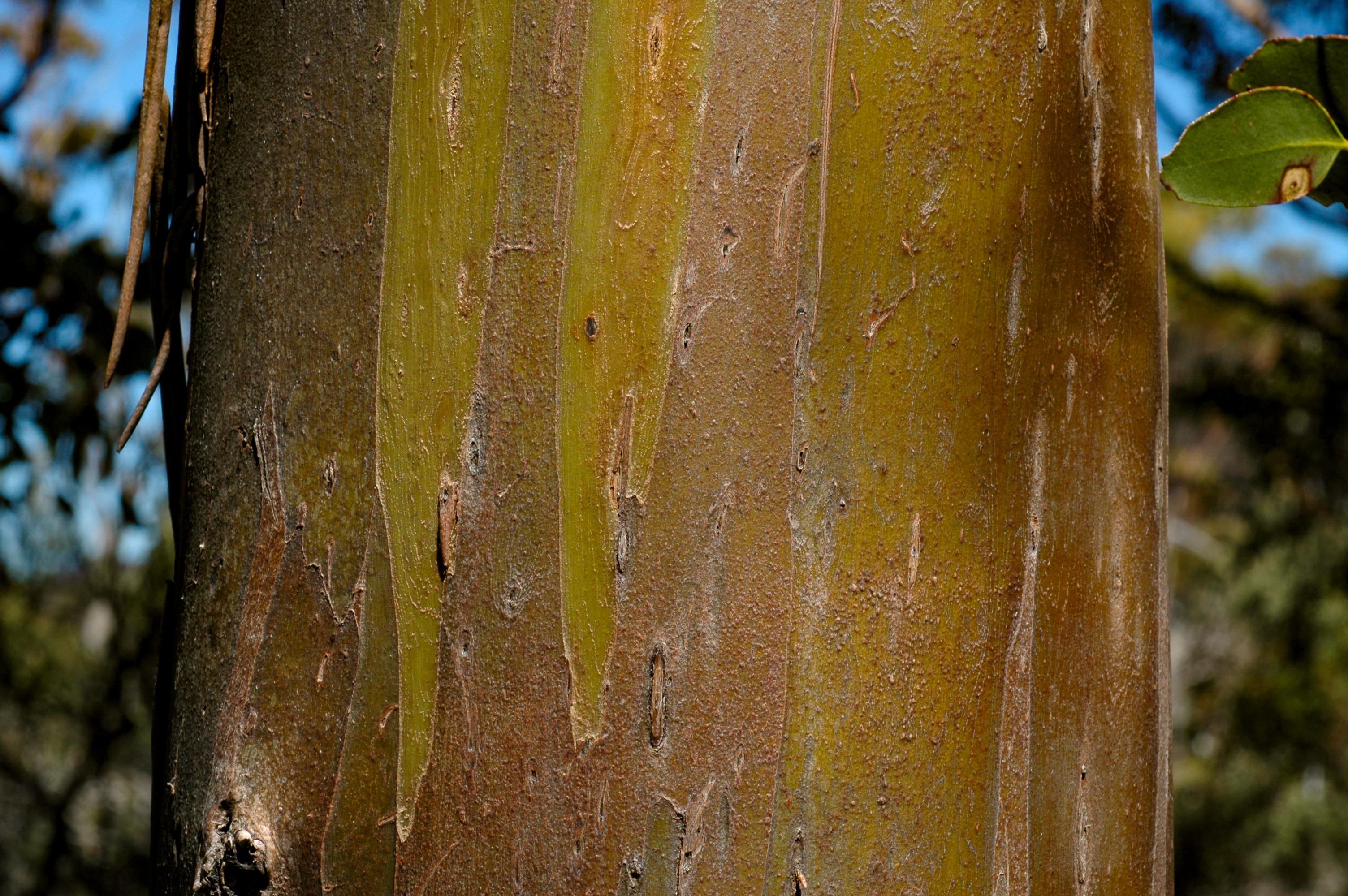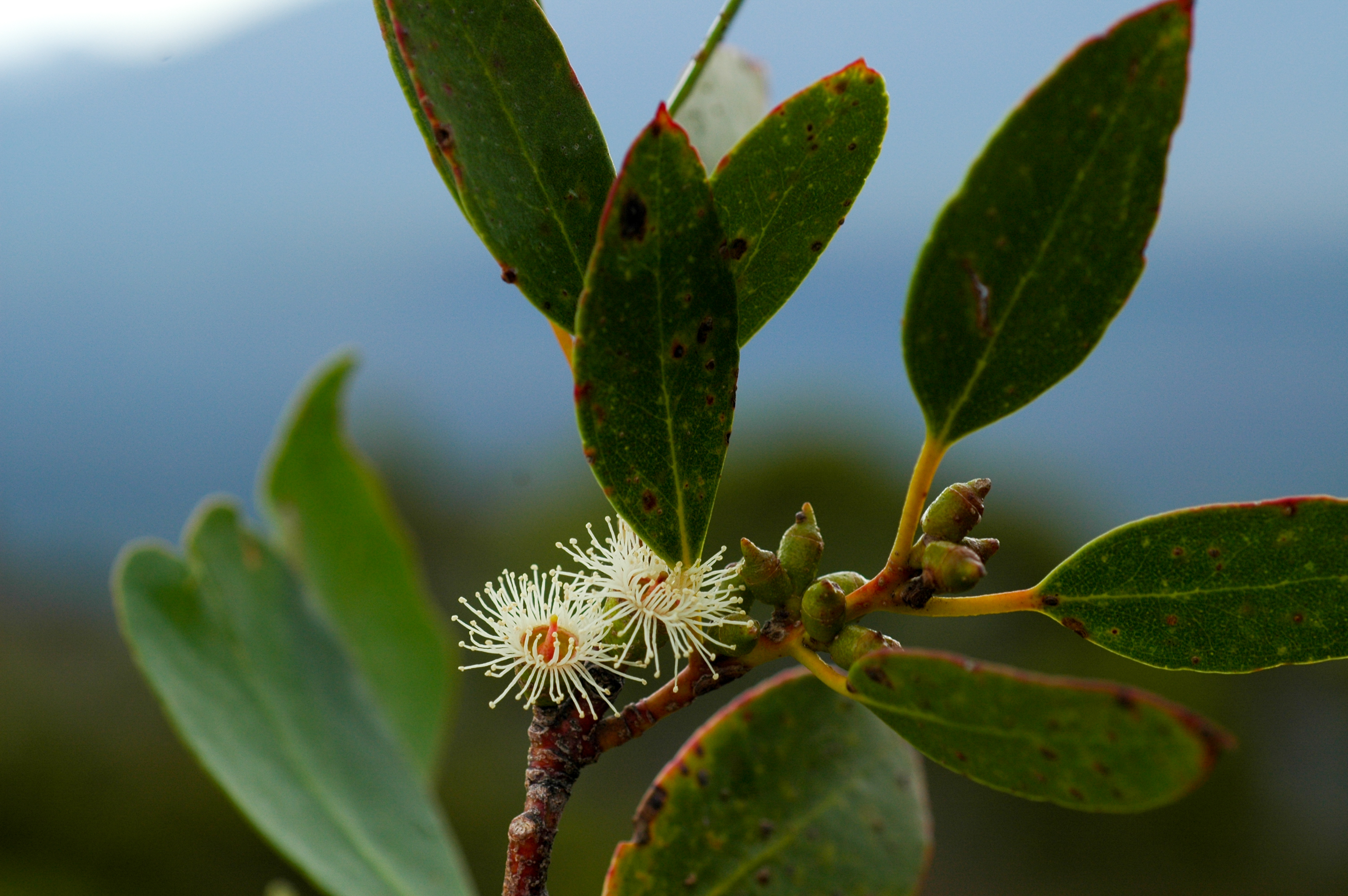Eucalyptus subcrenulata on:
[Wikipedia]
[Google]
[Amazon]


 ''Eucalyptus subcrenulata'', commonly known as Tasmanian alpine yellow gum, is a species of small to medium-sized tree that is
''Eucalyptus subcrenulata'', commonly known as Tasmanian alpine yellow gum, is a species of small to medium-sized tree that is


 ''Eucalyptus subcrenulata'', commonly known as Tasmanian alpine yellow gum, is a species of small to medium-sized tree that is
''Eucalyptus subcrenulata'', commonly known as Tasmanian alpine yellow gum, is a species of small to medium-sized tree that is endemic
Endemism is the state of a species being found in a single defined geographic location, such as an island, state, nation, country or other defined zone; organisms that are indigenous to a place are not endemic to it if they are also found else ...
to the highlands of Tasmania. It has smooth bark, glossy green, lance-shaped to egg-shaped adult leaves, flower buds in groups of three, white flowers and hemispherical to bell-shaped fruit. It is similar to '' E. johnstonii'', '' E. vernicosa'' and '' E. urnigera''.
Description
''Eucalyptus subcrenulata'' is a tree that typically grows to a height of , sometimes a tall, straight tree to , and forms alignotuber
A lignotuber is a woody swelling of the root crown possessed by some plants as a protection against destruction of the plant stem, such as by fire. Other woody plants may develop basal burls as a similar survival strategy, often as a response t ...
. It has smooth, pale grey to brown or yellowish bark, often with horizontal black scars. Young plants and coppice
Coppicing is a traditional method of woodland management which exploits the capacity of many species of trees to put out new shoots from their stump or roots if cut down. In a coppiced wood, which is called a copse, young tree stems are repeate ...
regrowth have stems that are square in cross-section, sometimes with a wing on each corner and sessile
Sessility, or sessile, may refer to:
* Sessility (motility), organisms which are not able to move about
* Sessility (botany), flowers or leaves that grow directly from the stem or peduncle of a plant
* Sessility (medicine), tumors and polyps that ...
leaves, arranged in opposite pairs. These leaves are egg-shaped to round, glossy green, long and wide with small teeth on the edge. Adult leaves are arranged alternately, lance-shaped to egg-shaped, the same shade of glossy green on both sides, long and wide, tapering at the base to a petiole long. The edge of the leaves sometimes have small teeth, the veins are at an angle greater than 45° to midrib and the leaves have a strong spicy aroma when crushed.
The flower buds are arranged in leaf axils in groups of three on an unbranched peduncle long, the individual buds sessile. Mature buds are oval, long and wide with a rounded to beaked operculum. Flowering occurs from November to May, peaking between January and March, and the flowers are white. The fruit is a sessile, woody, hemispherical to bell-shaped capsule long and wide with the valves at rim level or slightly above.
Taxonomy and naming
''Eucalyptus subcrenulata'' was first formally described in 1929 byJoseph Maiden
Joseph Henry Maiden (25 April 1859 – 16 November 1925) was a botanist who made a major contribution to knowledge of the Australian flora, especially the genus ''Eucalyptus''. This botanist is denoted by the author abbreviation when citing ...
and William Blakely
William Faris Blakely (November 1875 – 1 September 1941) was an Australian botanist and collector. From 1913 to 1940 he worked in the National Herbarium of New South Wales, working with Joseph Maiden on ''Eucalyptus'', Maiden named a ''red ...
in Maiden's book ''A Critical Revision of the Genus Eucalyptus'', from specimens he collected near Mount Field East in 1906. The specific epithet (''subcrenulata'') is derived from the Latin
Latin (, or , ) is a classical language belonging to the Italic branch of the Indo-European languages. Latin was originally a dialect spoken in the lower Tiber area (then known as Latium) around present-day Rome, but through the power of the ...
''sub-'' meaning "somewhat" or "not completely" and ''crenulatus'' meaning "having small, rounded teeth", referring to the leaf edges.
This eucalypt is in the subgenus ''Symphyomyrtus'', section ''Maidenaria'', series ''Semiunicolores'' along with two other Tasmanian species, Tasmanian yellow gum ('' E. johnstonii''), varnished gum ('' E. vernicosa'') and two mainland species, Mt Imlay mallee ('' E. imlayensis'') and Nunniong gum ('' E. elaeophloia''. Eucalypts in section ''Maidenaria'' have cotyledons with two lobes, flower buds in leaf axils and with two opercula, stamens with versatile anthers and flattened seeds with a ventral hilum. The species in the series ''Semiunicolores''have smooth bark, juvenile leaves mostly arranged in opposite pairs and with toothed margins, glossy green crown
A crown is a traditional form of head adornment, or hat, worn by monarchs as a symbol of their power and dignity. A crown is often, by extension, a symbol of the monarch's government or items endorsed by it. The word itself is used, partic ...
leaves, flower buds in threes and sessile fruit.
''Eucalyptus johnstonii'' tends to occur at lower altitudes than ''E. subcrenulata'' and ''E. vernicosa'', usually a small-leaved shrub, at the highest. It is also similar to urn gum ('' E. urnigera'') in series ''Orbiculares'' but that species is distinguished by its urn-shaped fruit. The mainland species have more greyish leaves.
Distribution and habitat
''Eucalyptus subcrenulata'' grows on exposed ridges, plateaus and slopes insubalpine
Montane ecosystems are found on the slopes of mountains. The alpine climate in these regions strongly affects the ecosystem because temperatures fall as elevation increases, causing the ecosystem to stratify. This stratification is a crucial f ...
woodland on the central and western highlands of Tasmania, including in the Mount Field National Park and Great Western Tiers
The Great Western Tiers are a collection of mountain bluffs that form the northern edge of the Central Highlands plateau in Tasmania, Australia. The bluffs are contained within the Tasmanian Wilderness World Heritage Site.
The bluffs stretch ...
. It also occurs with ''E. coccifera'' in the more exposed subalpine woodlands.
Use in horticulture
Tasmanian alpine yellow gum grows best in well-drained soil in a sunny location. It is frost resistant but must be kept watered. It is recognised as being very cold-tolerant in both New Zealand and Britain. Evans (1986) even identified ''E. subcrenulata'' as being a promising species for planting in milder areas of the United Kingdom.References
{{Taxonbar, from=Q15355840 subcrenulata Flora of Tasmania Myrtales of Australia Trees of Australia Plants described in 1929